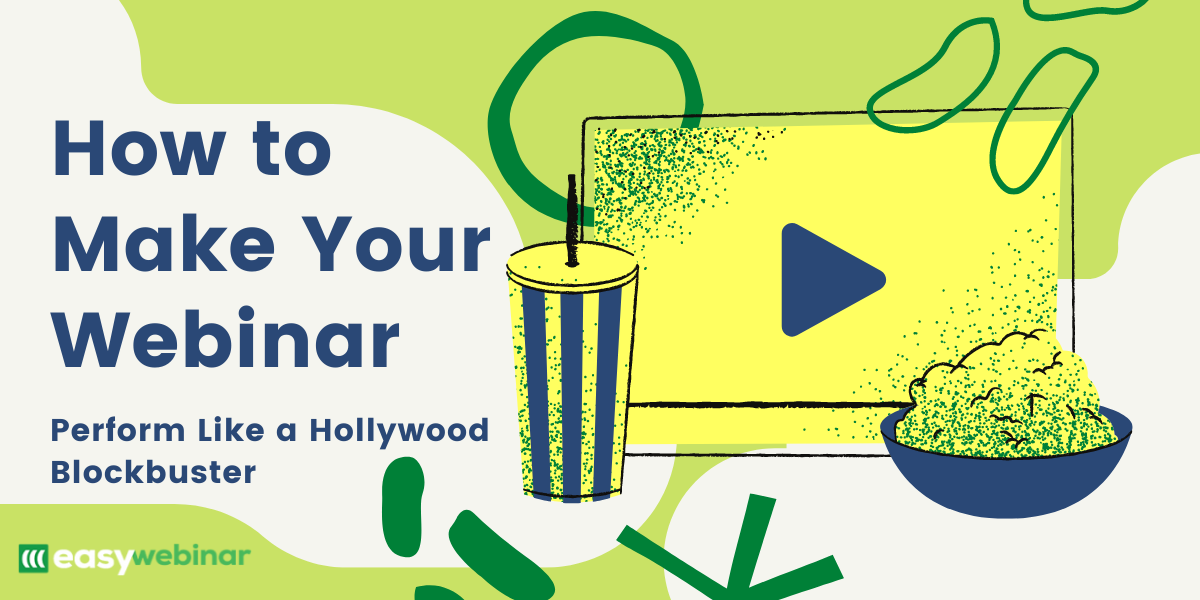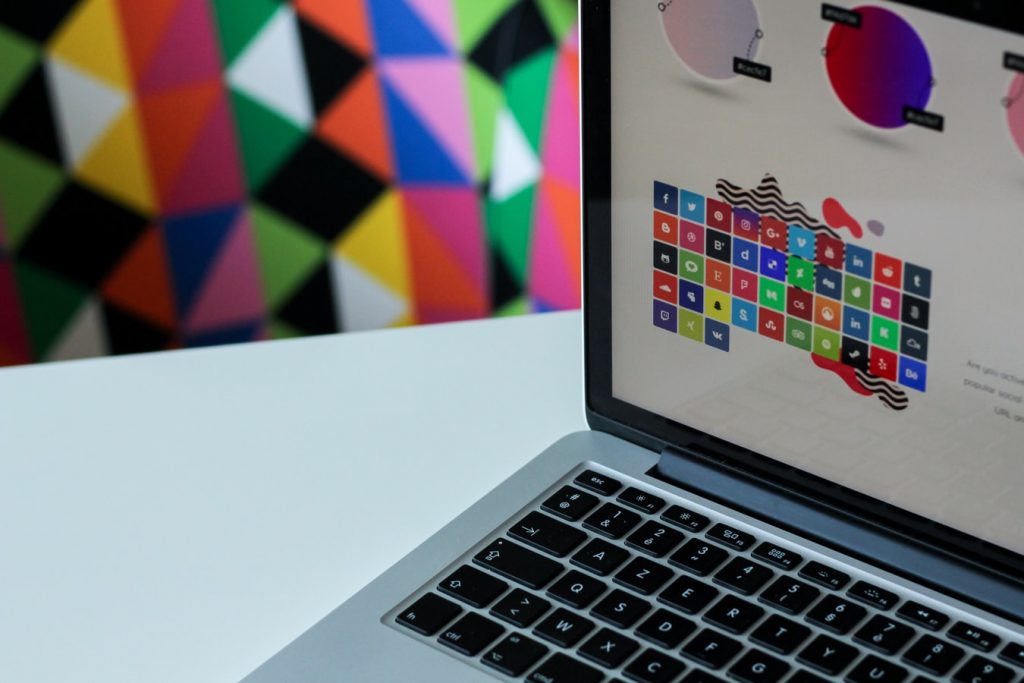How to Make Your Webinar Perform Like a Hollywood Blockbuster

Successful webinars are a well crafted art – not something you slap together the night before like a college exam.
There’s a lot of moving pieces to make sure it all works.
Creating an epic webinar includes:
- A compelling slide deck with engaging copy and images to grab their attention.
- Sharing your story to relate to your audience (and showing credibility as a go-to expert in your industry).
- Providing tons of value in your presentation but not so much that your audience gets overwhelmed and confused.
Not to mention, you’ll have to set up all the communication that needs to happen before and after your webinar. Each piece plays a vital role in creating high-converting webinars and automatic sales machines.
Some webinar users have mastered all these steps, while others are just getting started. Regardless of where you are, at EasyWebinar we want to help you create higher converting webinars to help you make the maximum amount of impact with your offers.
But there’s more than what you see as the webinar user. In fact, there are tons of things going before, during and after your webinar that plays a vital role in your success.
In this post, I want to share with you some of my best tips to help you manage the internal processes and create an amazing webinar.
5 Internal Processes For High Converting Webinars

Let’s have some fun with this one… stop thinking of your webinar as just a webinar.
Instead, start thinking of your webinar and upcoming launch as a big budget Hollywood movie. Even if it’s just you and your computer in your home office, dream big so you can map out an incredible event.
Here’s what I mean…
When a new movie gets green light from studio executives, the marketing team dives in. They decide a premiere date, when commercial spots drop, social media campaigns, and more. All of these strategies are geared towards getting the most people to buy tickets and head to the theater.
Whether you realize it or not, webinars have the same goal. The goal is to get as many people as you can to your event so you can provide value to your audience. The more people that register and show up means more potential revenue for your company.
The best part?
Rotten Tomatoes and keyboard warrior reviewers aren’t there to leave you nasty comments if things don’t go well in your webinar. Trust me, I used to be an actor and know what it’s like to get brutal feedback.
Once you put these internal processes into place, I’m confident that you’ll gain way more confidence and can keep scaling.
1. Planning Your Webinar

The first behind-the-scenes step is mapping out your webinar. Just like Hollywood producers pick a release date for a new movie premiere, you should strategically pick your webinar date and time(s).
Don’t just slap a date on the calendar and call it good, either. The day and time of your webinar can play a huge role in how many people will register and show up.
When thinking about your dates, make sure you:
- Use past data (if possible) to pick the best day/time.
- Plan a few weeks ahead of time to get everything ready.
- Find a time that is convenient for you and your audience as well.
- If you’re running live webinars, plan 2-3 webinars in one week to allow more people to show up. From our research, we’ve found that Wednesdays and Thursdays are generally the best time. Also, try to have different times of day to make it easier for your audience to show up as well.
Then, create your registration page so that you can start driving traffic!
Live vs. Automated Webinar Launch
You might be thinking, “I like automated funnels instead of live launches, what do I do instead?” If that’s the case, no worries. I love automation too. Click here to read the best practices (and pitfalls to avoid) with automated webinars.
Once you have the date(s) set, share them with your team and/or freelancers who are helping you out. Get everyone on the same page of the webinar topic, goal, dates, and anything else relevant.
2. Getting People to Your Webinar

Once you have the date(s), it’s time to go all-in on the promotion side of things. Just like a marketing team in Hollywood does, you want to share the big day(s) to make your audience aware.
This is arguably the most important part of the webinar, and most people don’t spend enough time on it. Remember, webinars are just a numbers game; the more people who show up, the more likely they are to buy your offer and work with you.
Here are four internal processes to help you drive traffic to your sales webinar.
Strategy #1: Facebook Ad Plan
Unless you have a massive email list, chances are you will need to run paid ads to drive traffic to your registration page . Make sure you use past high converting ads (if you have run them before) to keep costs low and set yourself up for success.
Also, you’ll want to start running ads 7-14 days before your webinar launch so schedule accordingly. This will give you plenty of time to tweak your ads, scale what’s working, and quit the ones that aren’t. Plus, if things get off to a rocky start, you’ll still have plenty of time to ramp up to promote your webinar.
Strategy #2: Contact Email Subscribers
Whether you have a list of 100 or 100,000 email subscribers, make sure you invite them to your event. Since they already have know, like, and trust factor with you, chances are their conversions will be higher than cold traffic from paid advertising.
Strategy #3: Post on Social Media

Don’t forget about social media either. If you’ve promoted this webinar before in past launches, check out which posts gave you the most engagement and reach. Then, do something similar on your favorite social media channels.
For example, if you’re using Instagram you could:
- Use Reels to talk about what people will gain from showing up.
- Post on your feed with a CTA to your link in bio to invite them to register.
- Use Instagram stories to show behind-the-scenes of you making the deck, preparing, etc.
Strategy #4: Partner With Affiliates
Finally, reach out to potential partners. If you’ve used affiliate marketing in past launches, invite them to help you promote again.
If you’re brand new to affiliate marketing, don’t worry, we’ve got you covered. Click here to learn more about using affiliate marketing to boost your business.
If this feels overwhelming at all, just remember: the more webinars you run, the easier this will get. As you run more webinars you’ll grow your email list, understand Facebook ads more, and build up your affiliate army.
3. Creating Your Webinar

Now that you have a date and traffic strategies, don’t forget about the actual webinar itself. With this step, you’ll want to make sure you set aside time to create the slide deck (or update an old one that converted well).
When creating your webinar slides and promotional materials, I recommend:
- Hire freelancers or VA’s to help with smaller tasks.
- Batching your time to avoid jumping around and to get the most done in the least amount of time.
Finally, keep promoting your webinar just like they do in Hollywood! Think about your favorite movies and remember how many times you see the date over and over again. Use the same strategy for your events.
4. Webinar Day

The fourth process to think about is the webinar day itself – aka, the premiere of your movie! While you likely won’t walk down the red carpet with paparazzi taking pictures, this is still your time to shine!
On your webinar day, make sure you are well rested, prepared, and excited for the big event It’s always a good idea to have some sort of personal morning routine to get yourself ready. Whether it’s exercise, running through your slides, meditation or other rituals, do whatever you can to get into a peak state.
Then, think about the actual webinar itself to ensure it is the best presentation for your audience. Here are some good processes and questions to think about on webinar day:
- Are your notes ready?
- Are your laptops fully charged?
- Is your external speaker working?
- Are your slides already uploaded?
- Have you eliminated distractions to give yourself the best chance to crush your webinar?
5. Post Webinar

The final set of internal processes is what happens after the webinar. Just like actors hit the podcasts and talk shows to promote their movies, you can do something similar to spread the news. Make sure that you share your webinar on Instagram, with your email list, and a podcast or YouTube channel if you have one.
You’ll also want to:
- Welcome new students. Make sure that you give your new students a great first impression by welcoming them to your program. Whether it’s a Facebook live, an AMA webinar, an email or a combination of them, let them know that you’re there for them.
- Repurpose your webinar content. Since a webinar is a big project, don’t let this epic piece of content just sit there. Instead, repurpose your webinar for social media and your email list.
- Study your results. Don’t forget to analyze your results as well. Figure out what went right and what went wrong by creating a debrief. This will make it so much easier to run future webinars and hopefully increase your conversion rate.
- Rest/recharge. Lastly, don’t forget to celebrate your success and get some much needed R&R. Just like Hollywood actors, you deserve to splurge and treat yourself for a job well done.
Final Thoughts

If you’re just starting out, chances are you don’t have SOPs for your webinar just yet… and that’s okay. But as you keep growing and scaling your business with live and automated webinars, make sure you keep updating your processes as well.
The more you can think of running your webinar like a Hollywood movie, the easier it will be to divide up tasks and make it great. . Your internal processes can make everything much easier, even if you are a solopreneur who is just starting out.
To summarize, here are the internal processes to focus on:
- Picking a date and time for your webinar.
- Choosing your traffic strategies to promote the event.
- Creating your webinar slide deck and corresponding emails.
- Have a great routine set for your webinar day to show up ready to go.
- Build an internal process for post-webinar launch to make sure the next one is even better.
Remember, there are a lot of moving pieces behind the scenes, but these processes will help you to get the most out of each webinar you run. The more you can create internal processes and checklists, the easier it will be to run more webinars in the future. This path leads to more sales, more impact, and less stress on your end.
Good luck, you got this!
